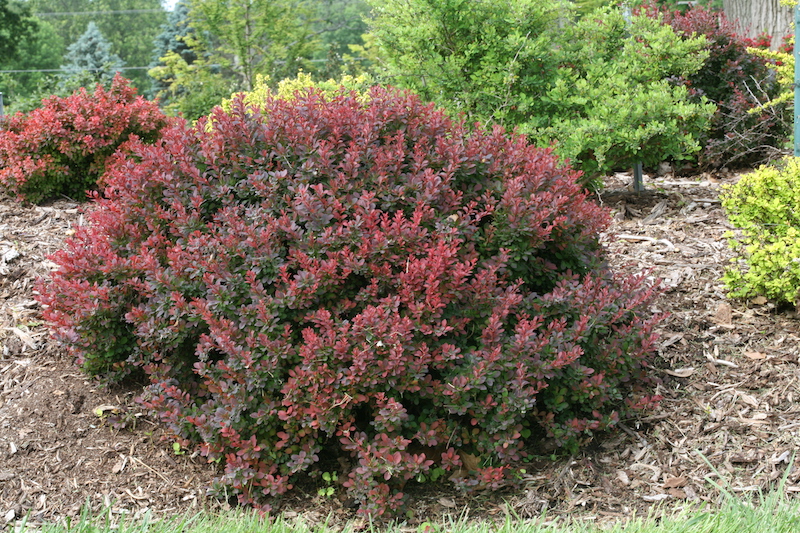Growing Barberry
Introduce year-round color into your landscape with the Barberry shrub. This bush has a woody, branched growth habit with a rounded form. Mature Barberry shrubs stand around 5 feet tall and wide. Yellow flowers bloom in the spring and are offset by small green leaves that turn red, orange, or purple during fall. The flowers give way to berries during the fall that stay in place after the leaves drop, providing visual interest and a food source for birds. Barberry shrubs are easy to maintain, and established plants require minimal care to thrive.

Planting Barberry
Barberry bushes create a lovely, colorful hedge. Space plants 3 feet apart to create a dense, continuous planting. This bush is not picky about the soil but prefers average-quality soil. The one soil trait that is not negotiable is drainage. Barberry does not like wet feet, so the soil must promote drainage. Select an area that receives full sunlight. This shrub can handle some shade but expect more vivid foliage when grown in plenty of sunlight.

Watering Barberry
Newly planted Barberry need consistent water for the first growing season. Established plants are drought tolerant. Mature plants can handle dry periods, but give the plant a drink during a drought to help it pull through and look its best. Wilted or curled leaves are a sign the plant is too dry, so give it a drink.
Fertilizing Barberry
Barberry plants are not heavy feeders. This shrub easily lives in average- or poor-quality soil but you can feed the plants to promote new growth and help them thrive. Apply a slow-release fertilizer in the spring as new growth emerges. A balanced plant food supports foliage and flowers and ensures the plant looks its best.
Pruning Barberry
Barberry has an excellent natural form, so pruning is not necessary. Let the plant be and remove dead or damaged growth as needed. Prune Barberry to create a manicured look or consistency for a hedge row. Trim Barberry after flowering is complete in the late spring or early summer. Avoid pruning the plant within two months of frost so the plant is better able to handle cold weather.

Caring For Barberry in Pots
Grow Barberry bushes in containers for flexible placement options and to introduce color and texture to a deck or balcony. Shrubs in containers need full sunlight. Water when the top few inches of soil are dry to the touch. Container-grown plants will appreciate soil with more organic content than plants in the ground. Apply a balanced fertilizer monthly during the growing season.
Winter Care for Barberry
Barberry bushes do not require special winter care, although plants grown in the northern reaches of the growing zones may need some protection from chilly weather. Avoid planting Barberry bushes in areas prone to high winds, but cover the plants using landscape fabric to protect against cold weather.

 |
Author Alison Cotsonas - Published 02-11-2023 |
